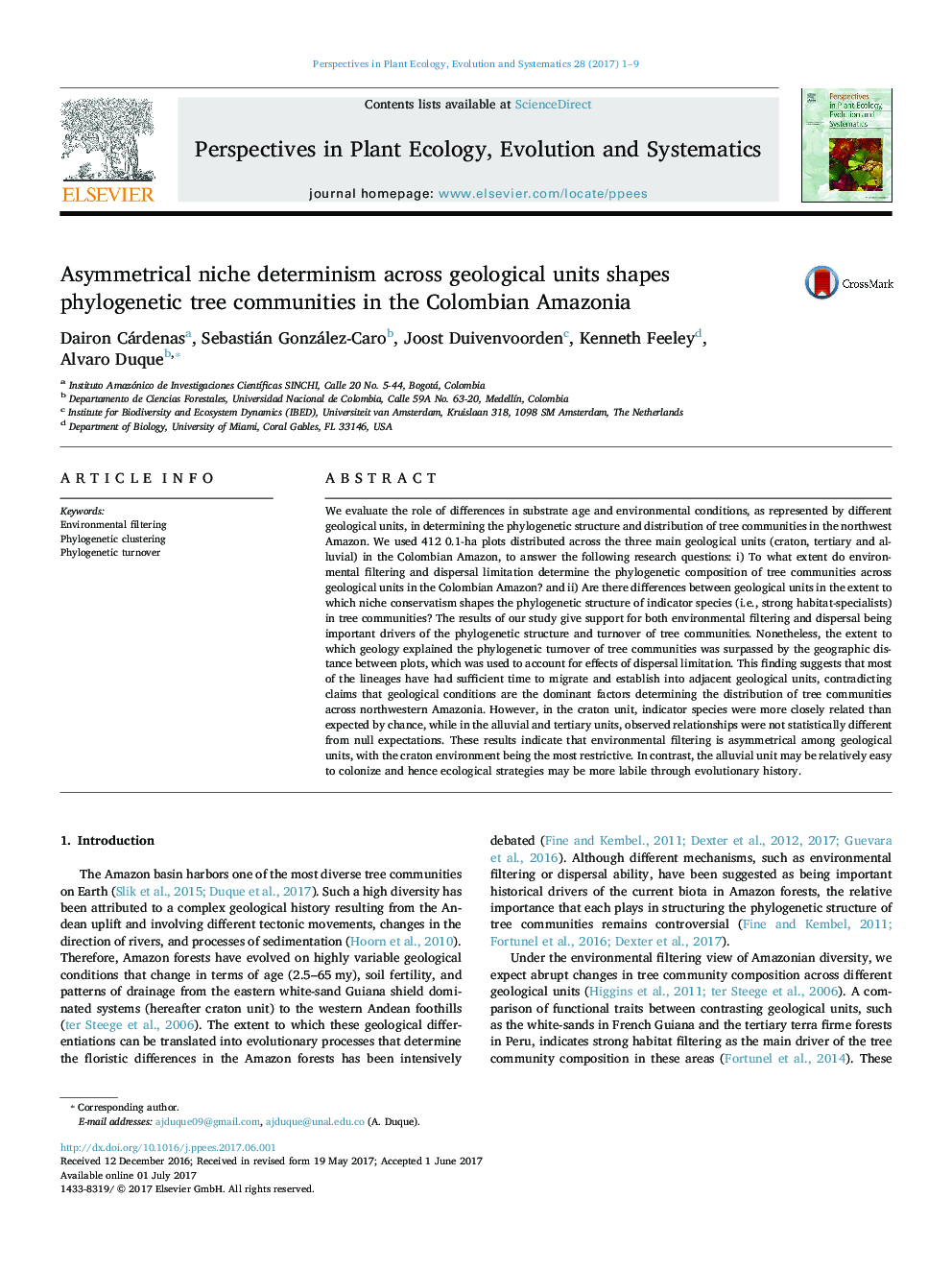| کد مقاله | کد نشریه | سال انتشار | مقاله انگلیسی | نسخه تمام متن |
|---|---|---|---|---|
| 5744956 | 1618592 | 2017 | 9 صفحه PDF | دانلود رایگان |
- Geographic distance surpassed geology in explaining turnover of tree communities.
- In the craton, indicator species were more closely related than expected by chance.
- In the alluvial and tertiary units, phylogenetic relatedness followed null expectations.
- Environmental filtering is asymmetrical among geological units.
- Significance of beta diversity increase when the craton unit is included.
We evaluate the role of differences in substrate age and environmental conditions, as represented by different geological units, in determining the phylogenetic structure and distribution of tree communities in the northwest Amazon. We used 412 0.1-ha plots distributed across the three main geological units (craton, tertiary and alluvial) in the Colombian Amazon, to answer the following research questions: i) To what extent do environmental filtering and dispersal limitation determine the phylogenetic composition of tree communities across geological units in the Colombian Amazon? and ii) Are there differences between geological units in the extent to which niche conservatism shapes the phylogenetic structure of indicator species (i.e., strong habitat-specialists) in tree communities? The results of our study give support for both environmental filtering and dispersal being important drivers of the phylogenetic structure and turnover of tree communities. Nonetheless, the extent to which geology explained the phylogenetic turnover of tree communities was surpassed by the geographic distance between plots, which was used to account for effects of dispersal limitation. This finding suggests that most of the lineages have had sufficient time to migrate and establish into adjacent geological units, contradicting claims that geological conditions are the dominant factors determining the distribution of tree communities across northwestern Amazonia. However, in the craton unit, indicator species were more closely related than expected by chance, while in the alluvial and tertiary units, observed relationships were not statistically different from null expectations. These results indicate that environmental filtering is asymmetrical among geological units, with the craton environment being the most restrictive. In contrast, the alluvial unit may be relatively easy to colonize and hence ecological strategies may be more labile through evolutionary history.
Journal: Perspectives in Plant Ecology, Evolution and Systematics - Volume 28, October 2017, Pages 1-9
